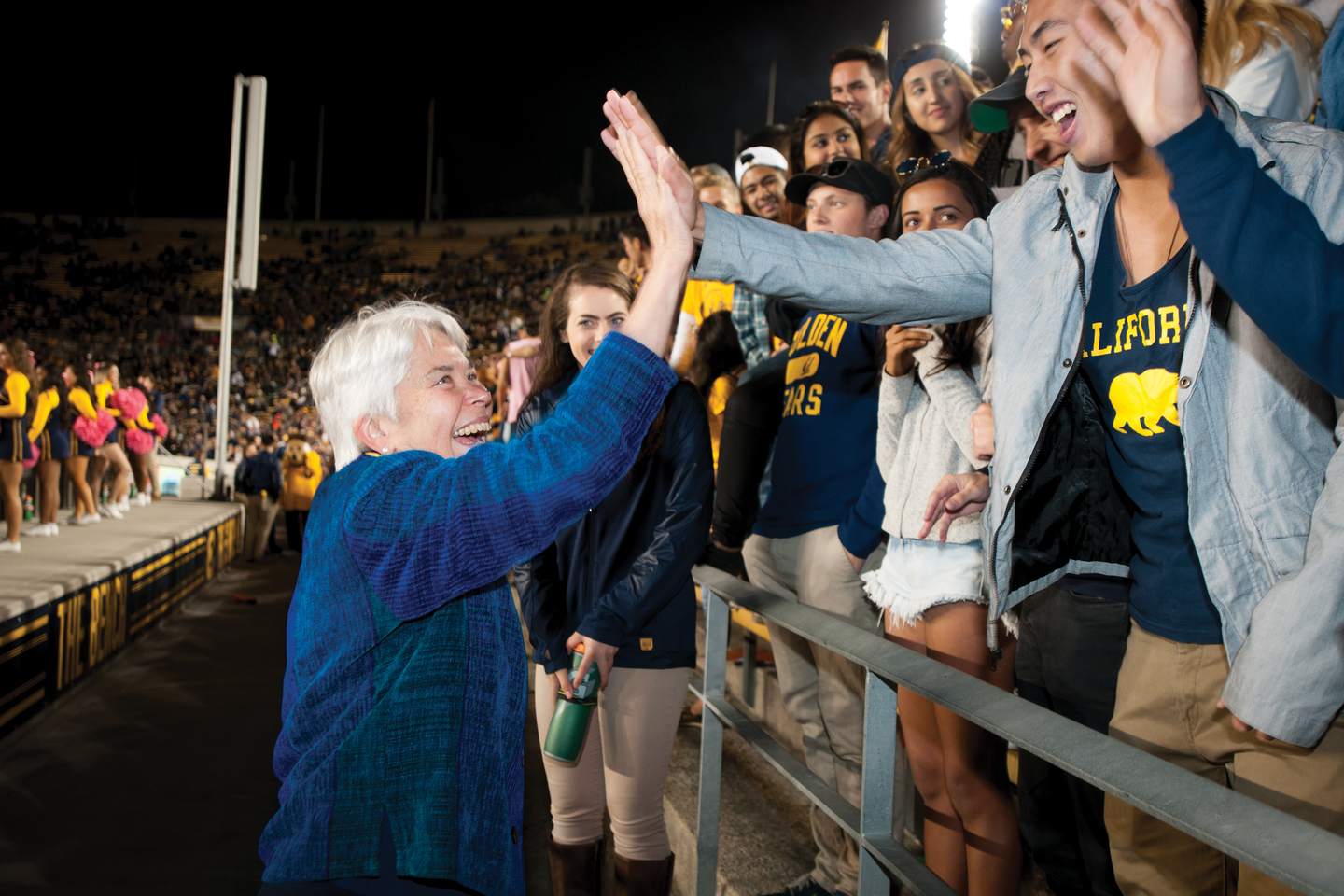Along with our sesquicentennial, Berkeley is celebrating another milestone: a record-setting year of fundraising. In 2017–18, we raised more than $569 million from over 66,000 donors like you, placing the university in prime position to renew its promise for the next 150 years. Your support, now one of the university’s most important revenue sources, means so much for our ability to uphold the dreams of the entrepreneurs and engineers, scientists and scholars, and artists and activists who come to Berkeley for its outstanding academics. Thank you.
This fundraising success is especially noteworthy because it is a key part of the new financial model we are building for Berkeley. While state funding remains a critical part of our budget, years of reduced state support have prompted us to consider how we can multiply and diversify Berkeley’s revenue sources while remaining true to our public mission. In addition to philanthropy, the new model focuses on non-degree enrollment programs, particularly in continuing education and summer classes; new professional master’s programs; and increased monetization of our real estate. With this shift, Berkeley will depend less on inconsistent sources of revenue and more on stable ones — helping to prevent periodic budget crunches in the future.
We have also been setting new strategic priorities for Berkeley. Universities often design strategic planning as a grassroots, bottom-up process, in which a high-level committee chooses from ideas submitted by the community. Given our budgetary challenges, I thought such a process would result in both dissonance and disappointment. Instead, our strategic planning effort explored four areas: the major societal challenges Berkeley should address through its teaching and research; the student experience; our enrollment strategy; and our finances.
The plan is now final, and we have several powerful themes that will guide Berkeley for the next 10 years. The stories on pages 2–15 help bring these themes to life.
As Berkeley continues to celebrate its sesquicentennial, it would be easy to tell a triumphalist story full of nostalgia and pride for our history and accomplishments. But Berkeley’s story is more so one of resilience, of constant evolution driven by resourcefulness and imagination. As we adapt both to the increasing demand for a University of California education — six of UC’s 10 campuses received more than 100,000 applications last year — and to a new strategic plan and funding model, Berkeley will continue to embody a diverse and entrepreneurial spirit and to empower people to change our world. That is a story that must be told.

